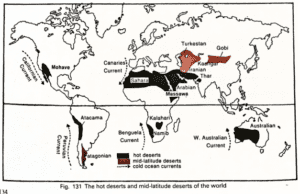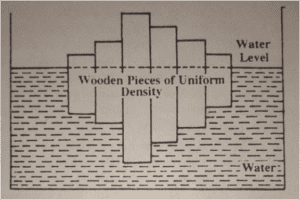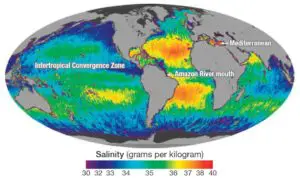Table of Contents
Understanding Drought-Prone Regions in India
As a teacher, it is essential to educate students about various geographical phenomena that affect our planet. One such phenomenon is drought, which has a significant impact on India. In this article, we will explore the significance, features, objectives, effects, and fun facts about drought-prone regions in India.
Significance of Drought-Prone Regions in India
Understanding drought-prone regions in India is crucial because they have a profound impact on the country. In India, approximately 16% of the total area and 12% of the population are affected by recurring droughts. Droughts can lead to water scarcity, affecting agriculture, livestock, industries, and human populations. To quantify the intensity of drought, scientists use a moisture index (MI).
Features of Drought
Drought is characterized as any scarcity of water that affects agriculture, livestock, industry, or human population. It refers to a temporary reduction in water or moisture availability significantly below the normal or expected amount for a specific period. Drought can occur due to inadequate rainfall or rainfall occurring with substantial gaps between wet spells.
Objectives of Understanding Drought-Prone Regions
The objectives of understanding drought-prone regions in India include:
- Educating people about the causes and effects of drought
- Creating awareness about the need for water conservation
- Identifying regions that require drought management strategies and resources
- Developing strategies to mitigate the impact of drought on agriculture, industries, and human populations
- Encouraging research and measures to enhance water availability in drought-prone areas
Effects of Drought
Drought has several adverse effects on the affected regions:
- Water scarcity for drinking, irrigation, and industries
- Reduction in agricultural productivity and crop losses
- Decreased availability of fodder for livestock
- Increased risk of wildfires
- Economic losses due to reduced agricultural output
- Migration of people from drought-prone areas to urban areas
Types of Drought
Drought can be classified into various types:
- Meteorological Drought: Occurs when rainfall is inadequate
- Hydrological Drought: Relates to water availability in rivers, lakes, and reservoirs
- Agricultural Drought: Affects crop production and agriculture
- Soil Moisture Drought: Refers to insufficient moisture in the soil
- Socio-economic Drought: Impacts the socio-economic conditions of an area due to water scarcity
- Famine: A severe and prolonged shortage of food
- Ecological Drought: Affects ecosystems and biodiversity
Drought-Prone Regions in India
A drought-prone area is defined as one in which there is a greater than 20% probability of a drought year. Chronic drought-prone areas have a probability greater than 40%. In India, approximately one-third of the land area, around 10 lakh square kilometers, is prone to drought. These areas receive low and highly unreliable rainfall.
There are 77 districts in India that receive less than 75cm of rainfall per annum, making them highly drought-prone and accounting for 34% of the net sown area. Additionally, there are 22 districts in Maharashtra, Gujarat, Madhya Pradesh, Karnataka, Rajasthan, and Uttar Pradesh that receive 75-85cm of rainfall per annum and are also considered drought-prone.
It is interesting to note that droughts have occurred even in regions with adequate rainfall, such as West Bengal, Odisha, and Bihar, where failures in rainfall can affect millions of people due to high population densities.
Fun Fact: Frequency of Droughts in India
The frequency of droughts varies across different regions of India. Here is a breakdown of the recurrence of highly deficient rainfall periods in different meteorological subdivisions:
| Meteorological Sub-divisions | Recurrence pf the period of highly deficient Rainfall |
| Assam | Very rare, once in 15 years |
| West Bengal, Chhattisgarh, Bihar, MP, Coastal Andhra Pradesh, Maharashtra, Konkan, Kerala, Odisha | Once in 5 years |
| South interior Karnataka, eastern Uttar Pradesh, Vidarbha | Once in 4 years |
| Gujarat, Eastern Rajasthan, Western Uttar Pradesh, Tamil Nadu, Kashmir, Rayalaseema, Telangana | Once in 3 years |
| Western Rajasthan | Once in 2.5 years |
Pros and Cons
Pros:
- Studying drought-prone regions helps in raising awareness about water scarcity and the need for conservation.
- It enables the development of effective drought management strategies.
- Understanding drought can assist in the mitigation of its adverse effects on agriculture, industries, and ecosystems.
Cons:
- Drought can lead to agricultural losses, economic hardships, and human suffering.
- Drought-prone regions often face water scarcity and long-lasting impacts on the local population.
- Efforts to combat drought effects can be resource-intensive and challenging.
Conclusion
Drought-prone regions in India have a significant impact on the country’s agriculture, industries, and population. It is essential to understand the causes, effects, and strategies to mitigate the impact of drought. By raising awareness, implementing conservation measures, and developing sustainable solutions, we can work towards minimizing the impact of drought on the affected regions and ensure a better future for all.
Sources:
– Mr Bhugolvetta (geographystudy.com) – YouTube
– ProEducator Academy – Learn by Experts
Mutiple Choice Questions
1. What is the definition of drought?
A) A lack of water in a specific region for a specific period
B) A temporary reduction in water availability
C) Insufficient rainfall for agriculture, livestock, industry, or human population
D) All of the above
Explanation: According to the information provided, drought is defined as any lack of water to satisfy the normal needs of agriculture, livestock, industry, or human population. It is a temporary reduction in water or moisture availability significantly below the normal or expected amount for a specific period.
Correct answer: D) All of the above
2. What is the scientifically computed index for drought?
A) Moisture Index (MI)
B) Drought Index (DI)
C) Rainfall Index (RI)
D) Soil Moisture Index (SMI)
Explanation: According to the information provided, the scientifically computed index for drought is the Moisture Index (MI).
Correct answer: A) Moisture Index (MI)
3. What percentage of agricultural land in India is prone to drought?
A) 35%
B) 68%
C) 33%
D) 16%
Explanation: According to the information provided, around 68 percent of the agricultural land in India is prone to drought in varying degrees.
Correct answer: B) 68%
4. Which of the following is NOT a type of drought mentioned?
A) Meteorological drought
B) Hydrological drought
C) Agricultural drought
D) Economical drought
E) Ecological drought
Explanation: According to the information provided, the types of drought mentioned are meteorological drought, hydrological drought, agricultural drought, soil moisture drought, socio-economic drought, famine, and ecological drought.
Correct answer: D) Economical drought
5. What is the probability threshold for a drought-prone area/region in India?
A) 10%
B) 20%
C) 30%
D) 40%
Explanation: According to the information provided, a drought-prone area/region is defined as one in which the probability of a drought year is greater than 20%.
Correct answer: B) 20%
6. Which region in India is demarcated as the worst famine tracts of the country?
A) Ahmedabad to Kanpur
B) Kanpur to Jalandhar
C) Leeside of the Western Ghats
D) Southern tip of the peninsula
Explanation: According to the information provided, the desert and semi-desert region demarcated by the lines from Ahmedabad to Kanpur and Kanpur to Jalandhar is the worst famine tracts of the country.
Correct answer: A) Ahmedabad to Kanpur
7. What is the frequency of highly deficient rainfall in Western Rajasthan?
A) Once in 2.5 years
B) Once in 3 years
C) Once in 4 years
D) Once in 5 years
Explanation: According to the information provided, highly deficient rainfall occurs in Western Rajasthan once in 2.5 years.
Correct answer: A) Once in 2.5 years
Brief Summary | UPSC – IAS
Approximately 68% of agricultural land in India is prone to drought, with 35% experiencing drought conditions and 33% being chronically prone to drought. Drought can occur due to inadequate rainfall or insufficient rainfall during critical periods for crops. There are various types of drought, including meteorological, hydrological, agricultural, soil moisture, socio-economic, famine, and ecological. A drought-prone area is defined as one with a probability of a drought year greater than 20%, while a chronic drought-prone area has a probability greater than 40%. Around 77 districts in India receive less than 75cm of rainfall per year and are considered drought-prone.



